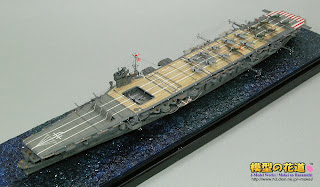
Oh dear, it's that time again. I know I shouldn't. But I find myself inching towards that soapbox in the corner and flicking the megaphone switch to 'On' again.
A correspondent, who shall remain nameless, used the witty phrase "never one to let the facts get in the way of his opinions" in respect of a well-known forumite, who shall also remain nameless. Having a quick shufti round the forums this morning I was struck, in a rather sad way, by just how much company this character has. It appears that a majority of threads, especially on the dreaded subject of colour schemes, are more about opinion than fact, even to the point where one poster characterises any facts dropped into the thread as just opinion. It is almost as though the fact (forgive me) that subjective interpretation inevitably comes into any discussion about colour means that "anything goes". That attitude becomes a major attack line for some, who appear to prefer opinion or even speculation over and above the few facts that are known and who plainly detest the fruits of the research they are too idle, ignorant or egotistical to embark upon themselves.
It seems reasonable to contribute information to these sort of threads, until you realise with a sinking heart that the same question will be asked again, that any factual information will soon be lost or forgotten and that the same wazzocks will wrap up any good stuff in a foggy cloud of speculative waffle and/or lots of questionably relevant pictures intended to demonstrate, presumably, their ability to trawl the net (there is an element of both competition and combativeness here, as though the more photos are crammed into a post the more established the "expert" credentials are). Well, deja vu with the colours of Hayate maybe two or three times, but not regularly every six weeks! Thus this blog.
What saddens me even more is that the dogged detective work of genuinely serious colour researchers in the past and the present seems to be so easily forgotten or ignored and replaced instead with pearls of opinionated wisdom from modellers (primarily), who seem to really believe that long hours spent staring at black and white (or even colour) photographs of their favourite aircraft gives them some kind of magical and superior expertise to determine the real colours of the original. That wouldn't be so bad were it not for the fact that quite often these same characters actually pour scorn on the fragments of primary documentary evidence that the real researchers have spent years of work and often expense bringing to light. That is just plain rude and ignorant.
Their logic seems to run along the lines of "Because only 25% of known fact supports this conclusion that allows me to offer instead 100% of pure, unadulterated, speculative opinion" instead of basing an opinion on what is known. Bullshit. Some of them even add insult to injury by qualifying this opinion with the time-worn phrase "I'm no expert but . . . ". Well, if you're no expert just wind your neck in and get back to your modelling! The other classic refuge is "Well, there is a lot of debate about (e.g. interior) colours". Is there? Where? The local modelling club? No, this phrase actually means (translation): "I don't know and I used this really weird colour but I'm going to pretend it is based on some serious mysterious "debate" somewhere". Bullshit. But maybe in this case it is understandable bullshit if your very nice model in the "wrong" colours is being challenged by some mega-bozo with all the usual books who thinks he knows more about it and you feel the need to defend yourself online. Tip: If you get asked aggressively "Is there any evidence for that colour?" answer thus: "Is there? I'd really like to know."
Please don't take this as displaying any kind of badge for colour police credentials. I think it is perfectly fine for modellers to interpret their models any way they want and to use what little evidence there is to make their own informed decisions. I think it is fine, even to be encouraged, to display speculative or interpretative colour schemes. No, what is unfortunate is when these very personal and subjective decisions are dressed up as some kind of definitive guidance or status quo for everyone else to follow and then begin to do the rounds of unsuspecting innocents - like the dreaded "Ameiro". A skill for making superb models does not automatically translate into unimpeachable accuracy, especially when it comes to colour, but a few misleading words may lead to that assumption. So when you complete that 1/32nd Shoki model please don't represent the decisions you made about its colour as being the last or even first word on the subject - they probably won't be!
No modellers were harmed in the production of this post but some egos may have been bruised. Touché.




























